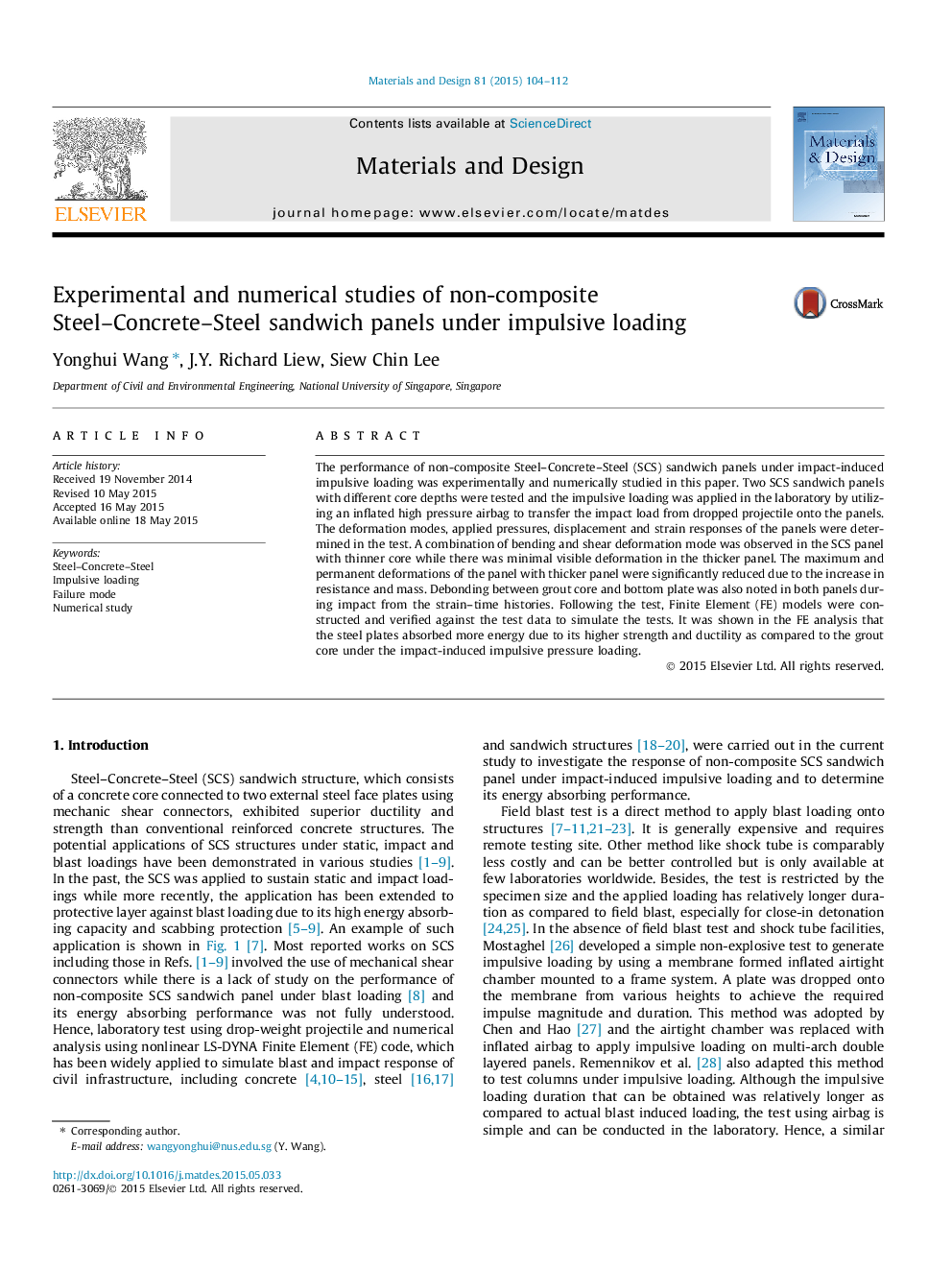| Article ID | Journal | Published Year | Pages | File Type |
|---|---|---|---|---|
| 828517 | Materials & Design (1980-2015) | 2015 | 9 Pages |
•Uniform impulsive loading up to 595 kN on the specimen was achieved by an airbag.•Deformation at back of SCS panel reduced by 72% with 50% increase in core depth.•Debonding between grout and bottom plate was due to the lack of shear connectors.•Most of energy was absorbed by steel due to its higher strength and ductility.
The performance of non-composite Steel–Concrete–Steel (SCS) sandwich panels under impact-induced impulsive loading was experimentally and numerically studied in this paper. Two SCS sandwich panels with different core depths were tested and the impulsive loading was applied in the laboratory by utilizing an inflated high pressure airbag to transfer the impact load from dropped projectile onto the panels. The deformation modes, applied pressures, displacement and strain responses of the panels were determined in the test. A combination of bending and shear deformation mode was observed in the SCS panel with thinner core while there was minimal visible deformation in the thicker panel. The maximum and permanent deformations of the panel with thicker panel were significantly reduced due to the increase in resistance and mass. Debonding between grout core and bottom plate was also noted in both panels during impact from the strain–time histories. Following the test, Finite Element (FE) models were constructed and verified against the test data to simulate the tests. It was shown in the FE analysis that the steel plates absorbed more energy due to its higher strength and ductility as compared to the grout core under the impact-induced impulsive pressure loading.
Graphical abstractFigure optionsDownload full-size imageDownload as PowerPoint slide
